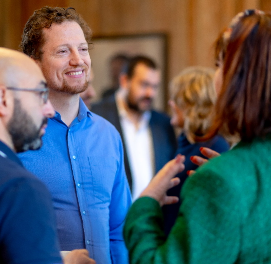In our 3rd blog in the series, ‘Diversity is given, Inclusion is a choice’, Annelieke Jense and Frouke Horstmann provide practical ways based on their experience working with clients on how organisations can create a true inclusive culture by installing processes that mitigate unconscious biases.
A hundred years ago, women fought for the right to vote, needing to justify why they voice also counted. Today the USA has a black Asian woman as vice president. We have indeed come a long way! But now is the time to drive home hard that we still have a long way to go to having a fully inclusively diverse culture as the norm, not the exception.
Inside office jokes, not understanding your colleagues when they chat in a language you do not understand, team meetings held on days when you do not work or not in your time zone, starting meetings without all colleagues present, consistently recruiting similar types, made to feel silly for not knowing the cultural norms, not being able to enter a building or attend an event due to disabilities not been taking into account, not starting from an assumption of competence due to race, gender or culture – if you have observed or experienced any of the above, you have encountered unconscious bias in the workplace. And more than likely none of these scenarios were not done with any ill intent, just like the last time you discussed your weekend with a colleague and didn’t involve the foreigner in the canteen.
So how can an organisation ensure true diversity and inclusivity?
When working with clients on how to mitigate unconscious bias, we like to use the word ‘nudge’ – moving people in the direction of inclusive behaviour without convincing them. We help them set their mechanism default in such a way that they choose the right inclusive behaviour because mechanisms, by default, usually invite in-group favouritism.
Throughout your career, the decisions to attract, develop and retain people are underpinned by HR processes and mental decisions often, without bad intent, built on unconscious biases and therefore excluding many people from the beginning.
An example is the Organ Donor drive in The Netherlands. At first people were asked to opt-in, stating they would be donors. But the system was based on the hardwiring of exclusion, discussion in our first blog, and did not generate participation no matter how hard the marketing efforts. But last year the government changed the law and by default you are a donor, unless you opt-out.
This shift can also be made on an organisational level when developing people, for example assessing promotions. The default question asked of managers is usually, Who is promotable? By changing the default to everyone is promotable, the argument is then who is not promotable and by doing this, more women are promoted.
Another example of how changes in the HR process can nudge others to inclusivity is instead of convincing leadership that you must have a D&I policy, ask the managers to argue why not!
‘Blind’ recruiting, i.e. removing personal information such as age, sex, nationality and even the applicant’s name from candidate applications during the assessment process is also a positive nudge in removing bias from the hiring process. This would also include the question “are you internationally mobile”, which often excludes people with young children. By changing this question to “would you consider an international assignment sometime in the future?”, you are automatically more inclusive.
If organisations are in favor of quota, rather work with for example maximum 70% homogeneity target.
What is considered an inclusive practice in your organisation? In our next and final blog in the series, Annelieke and Frouke will discuss what we believe is inclusive, such as the office socials, and how we can assess our personal behaviors and the practical ways to mitigate and our unconscious bias.
We invite you to follow us on LinkedIn, check out our blog page for original content and actionable insights or contact the authors (Annelieke Jense & Frouke Horstmann) to continue the discussion.
Copyright by TPCL (2021)





